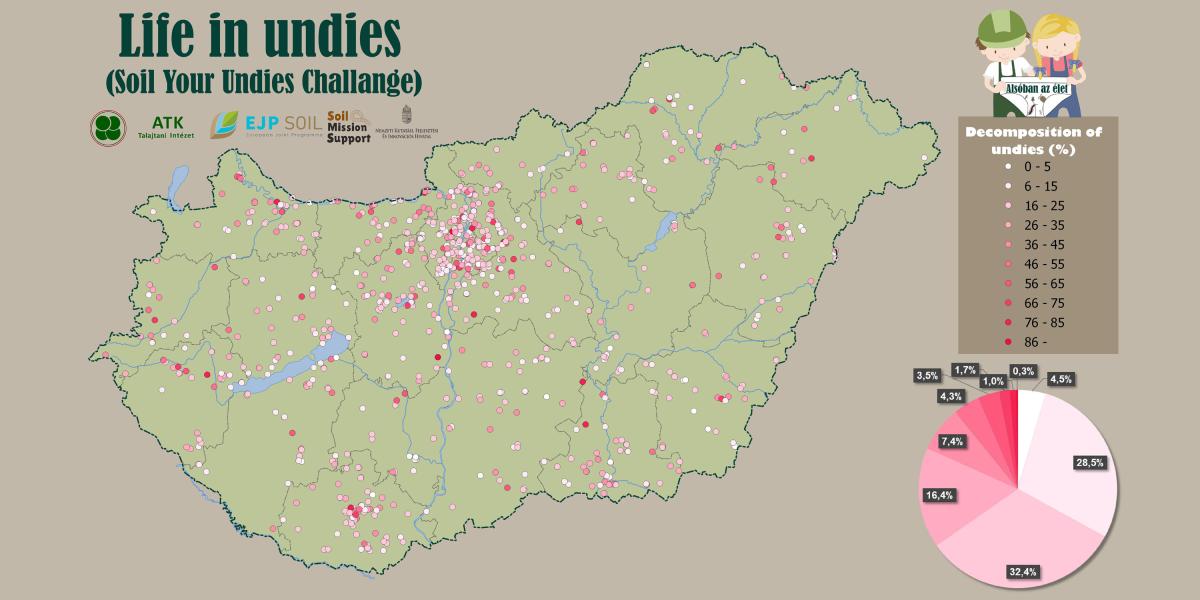The first citizen science programme to investigate soil conditions in Hungary was launched by the Institute for Soil Sciences in 2021. The "Life in Undies" programme is a Hungarian adaptation of the "Soil Your Undies" programme, which is already widespread in many countries.
Within the framework of the citizen science programme, we have set the goal of a nationwide survey of the microbial activity of Hungarian soils with the help of the population. A further main objective of the programme is to broaden the pool of environmental information (topography, climate, vegetation, etc.) used in soil mapping by additional available soil data provided by the population. The information obtained can be used to produce a biological activity map for a given year as a new environmental proxy variable, which can increase the accuracy of some target-oriented soil maps.
The citizen science project is broadly advertised without defining target groups. A total of 1,193 people applied to the programme, which carried out surveys at nearly 2,000 sites nationwide. With their help, the researchers obtained a valuable and large amount of data that can be used in scientific work.
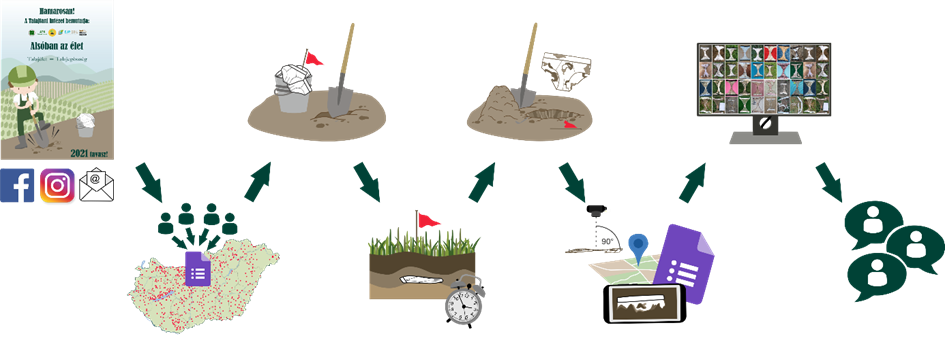 Research flowchart published in the online invitation
Research flowchart published in the online invitation
The participants buried nearly 2000 undies in different land uses (forest, arable land, orchard, vineyards, garden, grassland). The nationally spatially representative coverage was associated with land use diversity. Almost two thirds of the areas surveyed were small gardens (courtyard, garden), almost one third were arable land, vineyards or orchards and sporadically woodland.
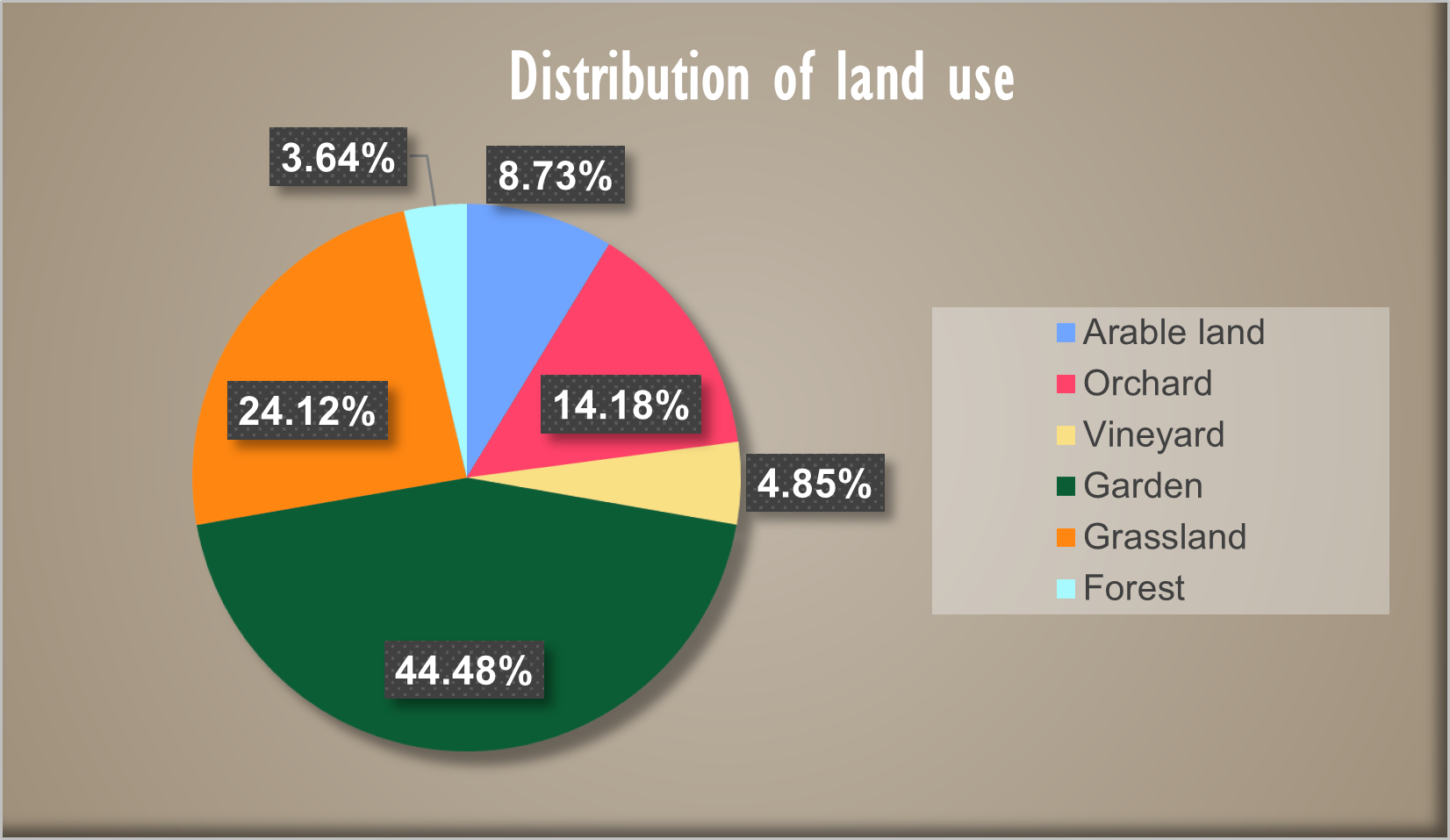 Land use distribution of the sample areas included in the research
Land use distribution of the sample areas included in the research
Participants received standardised cotton underwear by post, together with instructions for use. According to the instructions, they had to bury it at a depth of 20-25 cm in the spot they had been assigned.
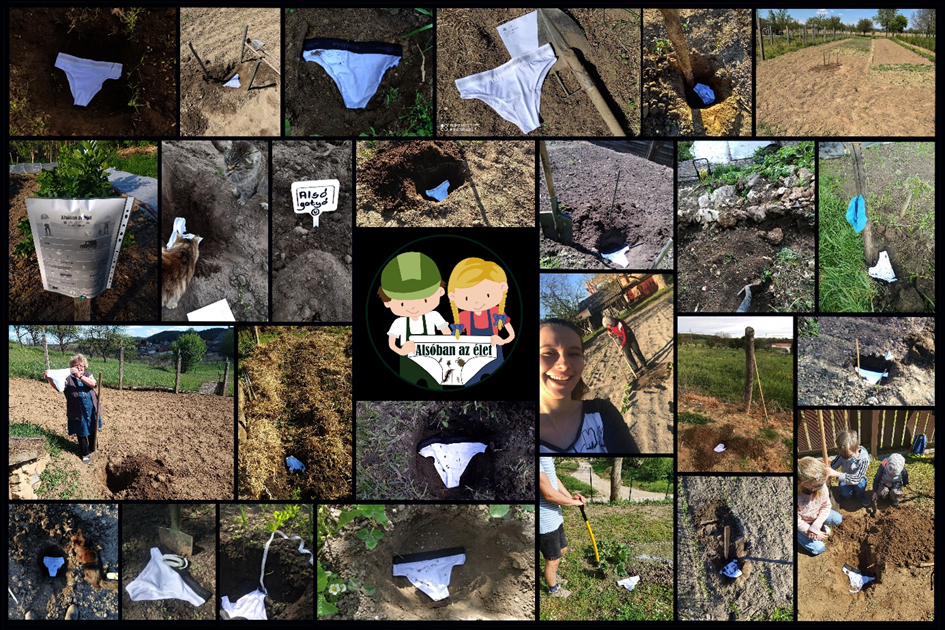 Photos sent by participants of the burying of the underwear
Photos sent by participants of the burying of the underwear
The underwear spent about 60 days in the ground after being buried in May and took it out in mid-July. After two months in the soil, the cotton undies showed signs of decomposition, both as a function of and as an indicator of the degree of soil biological activity. The percentage of decomposition of the underwear can be correlated with the active microbiological activity in the soil. The volunteers took digital photographs of the undies, which were submitted online to the Institute for Soil Sciences for analysis.
A total of 1138 digital photos were submitted from sites to be analysed. The biological activity of the soils was assessed in the following steps:
- The images were sorted, selecting those in which not all parts of the undies were visible (e.g., sticking out of the image, not cut in half, etc.), or were defective or lifeless. The remaining 1078 photos were processed.
- The background of the photos and other image elements were removed.
- Photos with different image sizes and resolutions were converted to a common size and resolution for comparability.
- The undies remnants appearing in the unified photographs were compared to a photograph of a reference underwear. This was used to determine what percentage of the underwear in the submitted photo was missing, i.e. characterizing the percentage of degradation.
Based on the percentage of decomposition, we ranked the submitted photos according to three different classification categories (i) by county, (ii) by land use, and (iii) by soil type. The sorted decomposition values were divided into four sets of four equal number of elements, called quartiles (Q), according to each of the three classification categories. Q1 means that the resulting decay value belongs to the top 25%, i.e. the most degraded bottom in the given category, while Q4 represents the bottom 25%, i.e. the least degraded set.
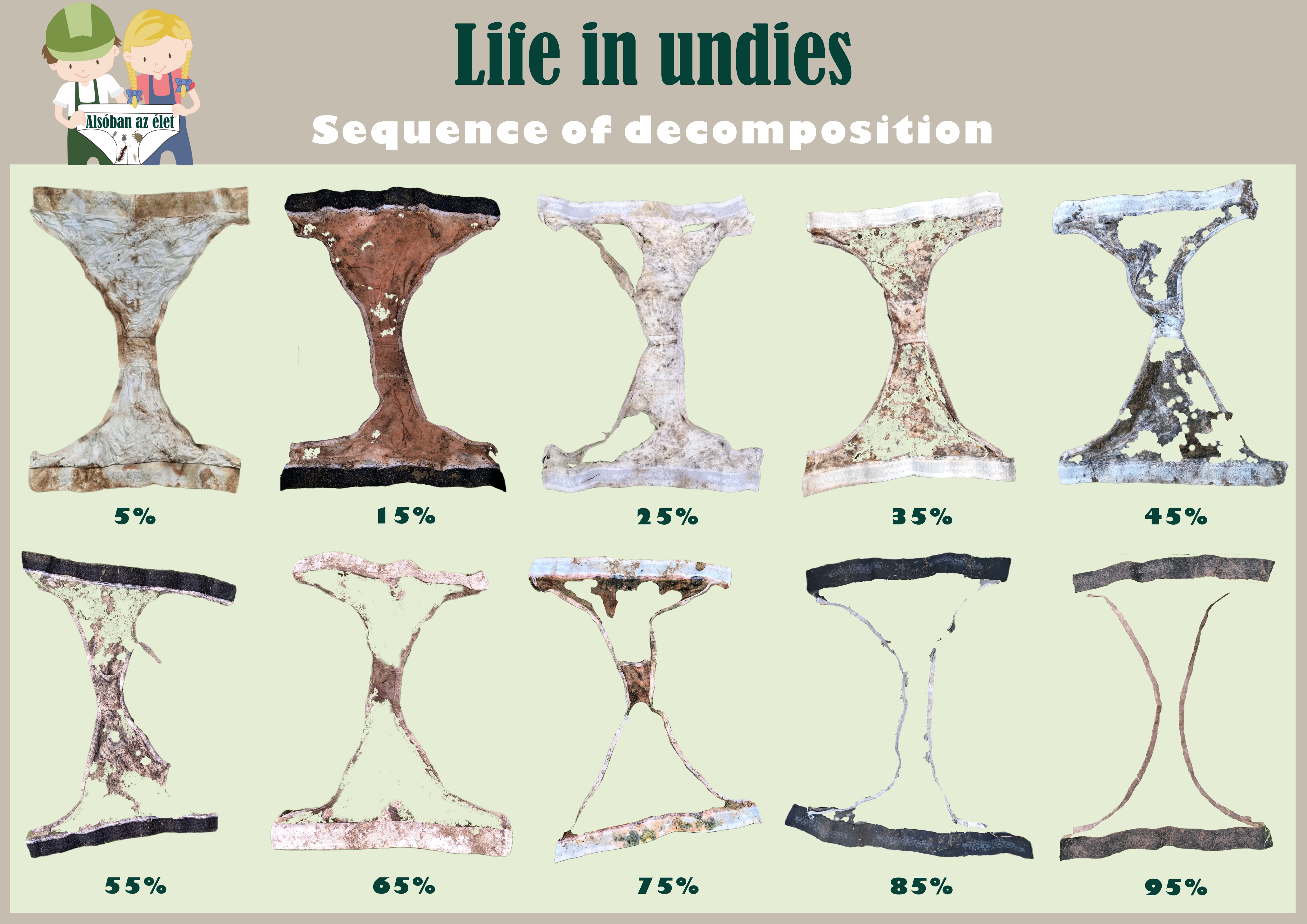 Sequence of decomposition of underwear
Sequence of decomposition of underwear
The map shows the location of sample areas with varying densities but with national coverage, and the different colouring of the resulting decay percentage levels. Nearly a third of the cotton undersides fell into the 16-25% decomposition category, while a tenth of the undersides fell into the 50% or above category. The method developed to estimate the decomposition of cotton material can estimate the biological activity of soil during the 2021 study period.
Due to the high level of interest last year, we would like to continue the Citizen Science Programme in 2022.
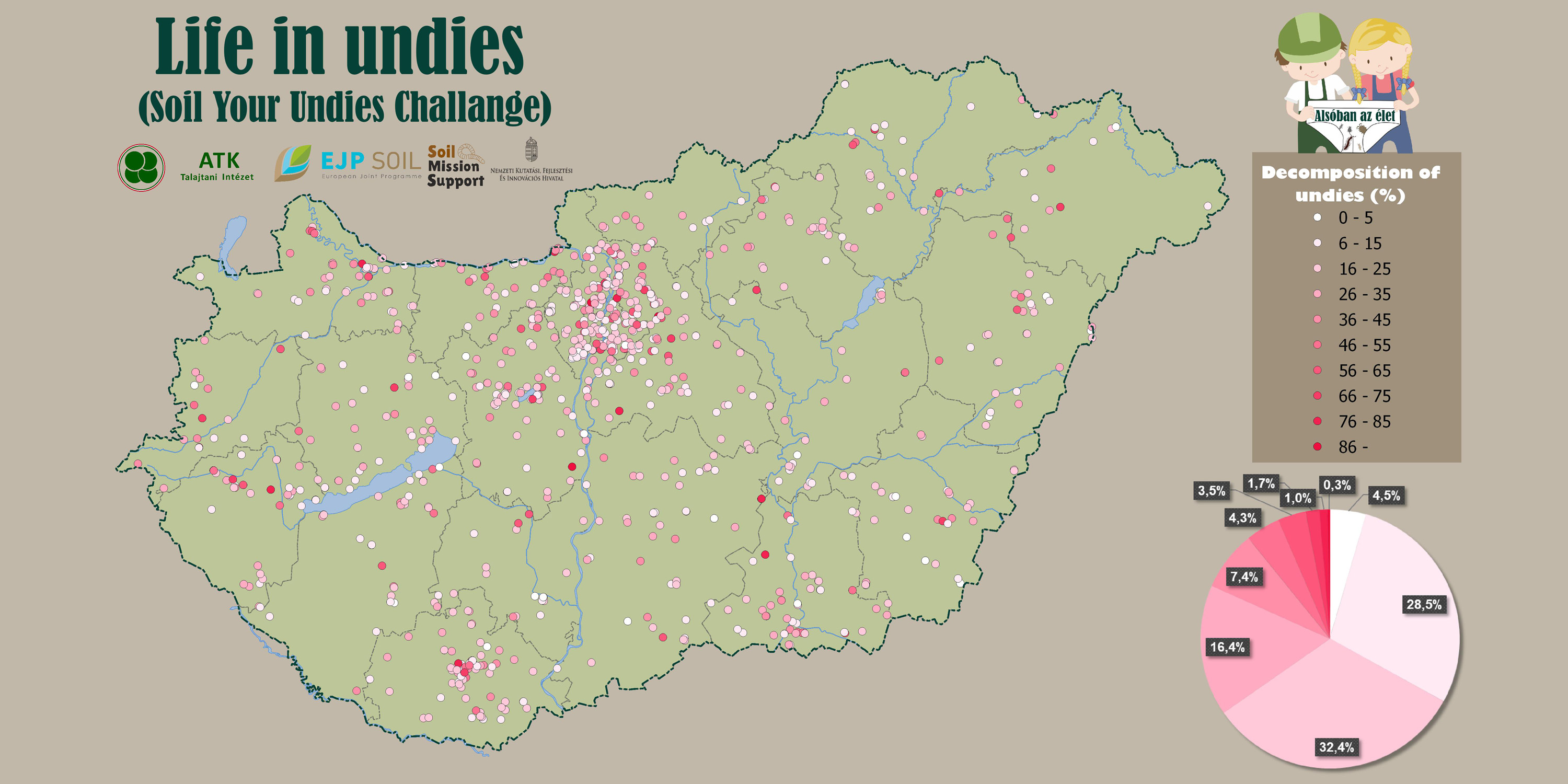 Spatial and percentage distribution of degradation levels as an indicator of biological activity
Spatial and percentage distribution of degradation levels as an indicator of biological activity
The programme was supported by the NKFIH OTKA project K-131820 and the NKFIH MEC N-140646, "Demonstrating the importance of soils through a social media campaign".

